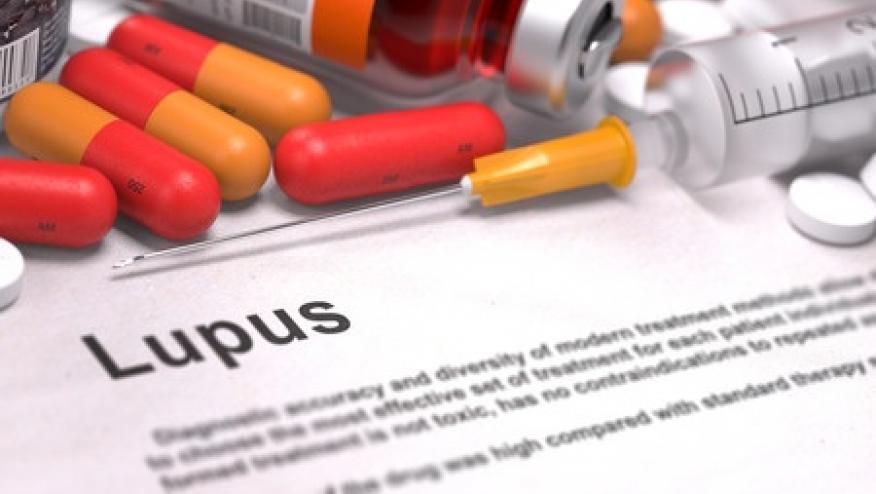How Do You Measure Success When It Comes to SLE? Save

EULAR 2021 opened with a grand debate to answer this essential question: should clinicians treat to remission or to Lupus Low Disease Activity State (LLDAS)?
Professor Ronald Van Vollenhoven shared the results of the Definition of Remission in the SLE (DORIS) project. Started in 2016, the DORIS project sought to identify the definition of remission and to translate remission into clinical practice. Treating to remission is important to reduce organ damage and mortality, but there is no uniformity in the definition of remission. The DORIS project sought to achieve consensus. It was comprised of a committee of 60 individuals, including patient representative and medical specialists (e.g., rheumatologists, nephrologists, clinical immunologists, and dermatologists).
Annual DORIS meetings for 5 years were held to conduct systemic literature reviews and evaluate individual studies. From their hard work, the committee reported their recommendations for remission1.
They concluded that remission can be defined as clinical SLEDAI score = 0, physician global assessment < 0.5. Remission can be defined without using serologies (e.g., dsDNA antibody level and C3, C4) as serologies do not play a large role and are unhelpful in remission assessment. Some patients do not have dsDNA antibody, and complement levels may vary in patients. Additionally, remission can occur at any point in time; there is no time limit for remission. One can set a goal of remission for 6 months or 2 years when treating a patient while the ultimate goal is sustained remission.
Regarding which clinical disease measurement to use, the SLEDAI tool has been most studied and validated, so the committee affirmed its use for remission assessment. Professor Van Vollenhoven acknowledges there are many different SLEDAIs (e.g., SELENA-SLEDAI, SLEDAI-2K, MEX-SLEDAI); these minor differences will not influence the definition for remission. He further emphasized that while it is desirable, it is rare for patients to attain remission off of all treatments; the DORIS remission definition allows for patients to be on treatment including prednisone <5 mg/day. Finally, he noted that both DORIS and LLDAS definitions should be used simultaneously in assessing clinical outcomes for research studies.
Professor Eric Moran countered Professor Van Vollenhoven, stating that remission, while ideal, is not a practical goal.
Most patients cannot achieve remission. Professor Moran skillfully displayed the evidence in favor of choosing LLDAS as the goal of SLE treatment, noting LLDAS is just as effective in preventing organ damage and decreasing mortality. He proclaimed LLDAS is “a state, which if sustained, is associated with low likelihood of adverse outcome” with consideration for disease activity and medication safety.
The Definition of LLDAS was validated in 2019 and published in Lancet2 as follows: LDDAS is defined as SLEDAI-2K < 4 with no activity in major organ systems (e.g., renal, CNS, cardiopulmonary, vasculitis, fever); additionally, there should be no new features of lupus disease activity compared to prior assessments, the Physician Global Assessment should be <1 (score 0-3), the prednisone dose should be < 7.5 mg/day, and patients may be on standard maintenance.
Dr. Michelle Petri validated the definition in the large Hopkins lupus cohort and found that if patients were in LLDAS 50% of the time, they have 50% reduction in damage accrual; she called this her 50-50 rule.
Other studies showed that LLDAS is associated with better health-related quality of life and reduction in healthcare costs, mortality, and pre-term pregnancy labor. Interestingly, LLDAS may have a dose dependent protection. Even if time in LLDAS is >20%, the rates of flare and damage accrual are decreased.
Dr. Moran noted that patients who are African American or who have renal involvement have more difficulties attaining LLDAS, citing genotype and phenotype may matter. He also emphasized the dose prednisone 7.5 mg/day is not a target, but a ceiling. Finally, he exclaimed that the LLDAS should be a part of all SLE clinical trials outcomes. It is more stringent than other disease response measures (e.g., SRI(4) and BICLA) and, it can help discriminate between drug effectiveness in lupus as noted in studies comparing azathioprine to mycophenolate, atacicept versus placebo, or belimumab versus standard of care. Remission studies would not be so discriminatory as few ever achieve the DORIS definition.
Who won the debate?
My vote is for Dr. Moran. I agree that while it is an admirable goal, remission is difficult to achieve for the majority of patients. Sometimes, good enough is enough. Adding medications to get to a SLEDAI of 0 and a PGA<0.5 may cause more harm with polypharmacy and infection. In clinical practice, the debate might be muted because most clinicians find disease measurement tools cumbersome and they do not perform a formal SLEDAI assessment; rather, they rely on gestalt or as the research world calls it: physician global assessment (PhGA). A whole new sub-debate opened on whether PhGA means anything. Dr. Andrea Doria chimed in that both of these presenters overemphasized the PhGA in their debate while in fact, it is worthless because PhGA has poor interrater reliability, too many different scales, it depends on the expertise of the assessor, and is not consistently measured.
- The 2021 DORIS remission definition: https://ard.bmj.com/content/80/Suppl_1/181.1.
- https://www.thelancet.com/journals/lanrhe/article/PIIS2665-9913(19)3003…








If you are a health practitioner, you may Login/Register to comment.
Due to the nature of these comment forums, only health practitioners are allowed to comment at this time.